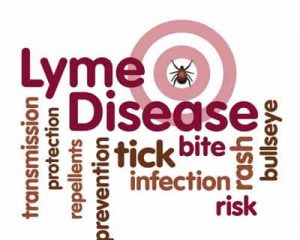- Home
- Editorial
- News
- Practice Guidelines
- Anesthesiology Guidelines
- Cancer Guidelines
- Cardiac Sciences Guidelines
- Critical Care Guidelines
- Dentistry Guidelines
- Dermatology Guidelines
- Diabetes and Endo Guidelines
- Diagnostics Guidelines
- ENT Guidelines
- Featured Practice Guidelines
- Gastroenterology Guidelines
- Geriatrics Guidelines
- Medicine Guidelines
- Nephrology Guidelines
- Neurosciences Guidelines
- Obs and Gynae Guidelines
- Ophthalmology Guidelines
- Orthopaedics Guidelines
- Paediatrics Guidelines
- Psychiatry Guidelines
- Pulmonology Guidelines
- Radiology Guidelines
- Surgery Guidelines
- Urology Guidelines
Essential oils from garlic alleviate symptoms of Lyme disease

Garlic oil and oil extracted from other common medicinal plants is highly effective against the bacteria causing Lyme disease.
The study published in the journal Antibiotics has reported that these oils alleviate the symptoms of Lyme disease that persist after standard antibiotic treatment.
Earlier in 2015, Johns Hopkins researchers have reported that a three-antibiotic combination--doxycycline, cefoperazone and daptomycin reliably killed Lyme persister bacteria in lab dish tests. In a 2017 study, they found that essential oils from oregano, cinnamon bark, clove buds, citronella, and wintergreen killed stationary phase Lyme bacteria even more potently than daptomycin.
Read Also: Latest NICE Guidelines on Lyme Disease
The researchers from the Bloomberg school included lab-dish tests of 35 essential oils--oils that are pressed from plants or their fruits and contain the plant's main fragrance, or "essence." The researchers found that 10 of these, including oils from garlic cloves, myrrh trees, thyme leaves, cinnamon bark, allspice berries, and cumin seeds, showed strong killing activity against dormant and slow-growing "persister" forms of the Lyme disease bacterium.
"We found that these essential oils were even better at killing the 'persister' forms of Lyme bacteria than standard Lyme antibiotics," says study senior author Ying Zhang, MD, Ph.D., professor in the Department of Molecular Microbiology and Immunology at the Bloomberg School.
About 10 to 20 percent of patients treated for Lyme disease report persistent symptoms including fatigue and joint pain--often termed "persistent Lyme infection" or "post-treatment Lyme disease syndrome" (PTLDS) that in some cases can last for months or years.
The exact mechanism behind this lingering symptom is still unclear. However, it is known that cultures of Lyme disease bacteria, Borrelia burgdorferi, can enter a so-called stationary phase in which many of the cells divide slowly or not at all. The slow-dividing or dormant cells are "persister" cells, which can form naturally under nutrient starvation or stress conditions, and are more resistant to antibiotics. Some researchers have sought other drugs or medicinal compounds that can kill persister Lyme bacteria in the hope that these compounds can be used to treat people with persistent Lyme symptoms.
Read Also: Garlic helps to fight chronic infections
Zhang and his team extended their lab-dish testing to include 35 other essential oils and found 10 that show significant killing activity against stationary phase Lyme bacteria cultures at concentrations of just one part per thousand. At this concentration, five of these oils derived respectively from garlic bulbs, allspice berries, myrrh trees, spiked ginger lily blossoms and may change fruit successfully killed all stationary phase Lyme bacteria in their culture dishes in seven days, so no bacteria grew back in 21 days.
Oils from thyme leaves, cumin seeds, and Amyris wood also performed well, as did cinnamaldehyde, the fragrant main ingredient of cinnamon bark oil.
Though this is the initial phase of research, the investigators have planned to carry forward the research in mouse models of persistent Lyme infection and if the results are favorable, then the initial clinical trial will take place.
Lyme disease is caused by the bacterium Borrelia burgdorferi and is transmitted to humans through the bite of infected blacklegged ticks. Typical symptoms include fever, headache, fatigue, and a characteristic skin rash called erythema migrans.

Disclaimer: This site is primarily intended for healthcare professionals. Any content/information on this website does not replace the advice of medical and/or health professionals and should not be construed as medical/diagnostic advice/endorsement or prescription. Use of this site is subject to our terms of use, privacy policy, advertisement policy. © 2020 Minerva Medical Treatment Pvt Ltd